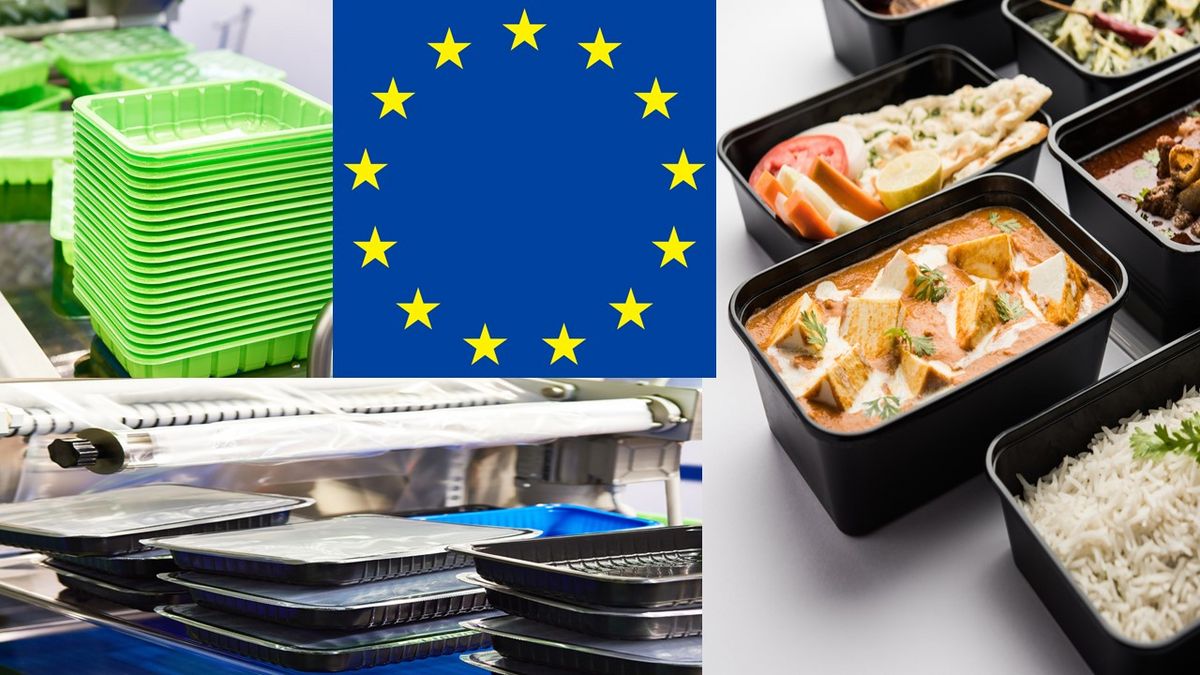As discussed in the previous article, the European Union on September 3, 2020, issued the (EU) No. 10/2011 Amendment Regulation (EU) 2020/1245, which made important amendments to (EU) No. 10/2011 to give much more clarity and coverage to plastic food contact materials. This is the 15th amendment since Regulation (EU) No. 10/2011 was initially issued.
The Annexures 1 and 2 were discussed in previous article which threw light on the substances and the restrictions on plastic materials and articles. In this article, we will look at the compliance aspects and view what is the transition period applicable for interested stakeholders.
Annex IV - Declaration of compliance
Information related to the substances used or products of degradation thereof for which restrictions and/or specifications are set out in Annex I and II of the Regulation. This information shall include the identification and amount of substances which are subject to restrictions in Annex II and have genotoxicity which cannot be ruled out in intermediate materials at intermediate stages, is required to include in the declaration of compliance certificate to allow the downstream business operators to ensure compliance with the Regulation.
Now let’s talk about testing!
Annex V - Compliance testing
- Chapter 2 - Testing for specific migration of materials and articles not yet in contact with food
- Point 2.1.3 of EU 10 2011- Conditions of contact when using food simulants
New testing rules are added for specific migration of plastic materials or food processing equipment or an appliance, or a part thereof. Determining the specific migration into food or food simulant can also be carried out by whole food processing equipment or an appliance, or a part thereof.
- Point 2.1.6 – Specific Migration test of Repeated use articles and materials
The stability of material must be verified during three subsequent specific migration tests. The migration test(s) for repeated use food contact materials and articles need to be carried out three times on a single sample using a fresh portion of simulant on each occasion. The value of specific migration for each cycle of test must not be higher than the value in the preceding migration test. The verification of compliance is done based on the level of migration found in the third test and taking into account on the basis of stability from the first to the third migration test. If the migration increases from first to third migration, the compliance of the material must not be established because of insufficient stability even though the SML is not exceeded in any of three tests.
There is no requirement for subsequent tests, if the level of migration decreases in the second and third tests and if the migration limits are not exceeding set limits on the first test.
A material or article will not be considered to comply if a prohibited substance is found to migrate in detectable quantities in the first test even though above conditions are met.
Chapter 3 - Testing for overall migration
- In Point 3.1 - Standardized conditions for testing the overall migration
A new testing condition (OM0) for overall migration is added and Reflux condition is added in OM4 as an option if 100°C is technically difficult to be applied. This is summarized in below table
Test Number | Contact time in days [d] or hours [h] at Contact temperature in [°C] for testing | Intended food contact conditions |
OM0 | 30 min at 40 °C | Any food contact at cold or ambient temperatures and for a short duration (≤ 30 minutes). |
OM4 | 1 hour at 100°C or at reflux | High temperature applications for all types of food at temperature up to 100°C |
Some editorial changes are made in Point 3.2 and Point 3.3.2
- Point 3.2 - Substitute overall migration tests for tests with food simulant D2, and
If it is not technically feasible to perform one or more of the tests OM0 to OM6 in food simulant D2 then migration tests shall be done using ethanol 95 % and isooctane. In addition, a test shall be done using food simulant E in case the worst foreseeable conditions of use exceed 100 °C. The test that results in the highest overall migration shall be used to establish compliance with the regulation.
In case it is technically not feasible to perform OM7 with food simulant D2, either test OM8 or test OM9 shall be selected as a replacement test by selecting the most appropriate of these two tests on the basis of the intended and the foreseeable use of the material or article that is being tested. Subsequently, a migration test shall be done at each of the two test conditions specified for the selected test, using a new test sample for each test condition. The test condition that results in the higher overall migration shall be used to establish compliance with the Regulation.
Test Number | Contact time and | Intended food |
OM8 | Food simulant E for 2 hours at 175°C | High temperature applications only |
OM9 | Food simulant E for 2 hours at 175°C | High temperature applications including long term storage at room temperatures |
- 3.3.2. overall migration test for Repeated use articles and materials
The applicable overall migration test shall be carried out three times on a single sample using another portion of food simulant on each occasion and overall migration test results test shall be lower in each occasion i.e. from first to second to third test. Compliance with the overall migration limit shall be verified on the result found in the third test.
If it is not technically feasible to test the same sample three times then test can be carried out by testing different samples for three different periods of time lasting one, two and three times the applicable contact test time. Compliance shall be verified on the basis of difference between the third and the second test results, which shall not exceed the overall migration limit. In addition, the difference between the second and the first test results shall be lower than the first test results and the difference between the third and the second test results shall be lower than the difference between the second and the first test results.
No additional test is required if on the basis of scientific evidence, it is established that the level of migration decreases in the second and third tests and if the migration limits are not exceeded on the first test.
Transition Period
The amendment came into force on 23rd September 2020 where transition period of two years is given i.e. until 23 September 2022. For Plastic materials and articles that in compliance with Regulation (EU) No. 10/2011 and which are being first placed on the market before 23 March 2021, will remain on the market until the exhaustion of stocks.
Now with the transition period final date nearby, we at TUV India Pvt. Ltd. food and packaging testing laboratories are fully equipped to support you and perform the required product testing to ensure you comply with the updated regulatory requirements. Our team of experts, continually update capabilities to ensure product testing services are up-to-date and we are always ready to support our customers and industrial stakeholders.
DISCLAIMER : We have tried to provide a summarized information on major amendments to the regulations, however, it is advisable to refer to the latest amended directives for final referral.
About The Author

TUV India Pvt Ltd
TÜV NORD GROUP
certificationindia@tuv-nord.com
